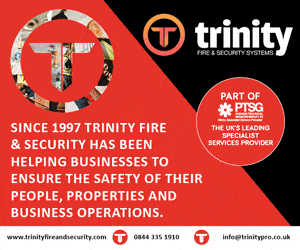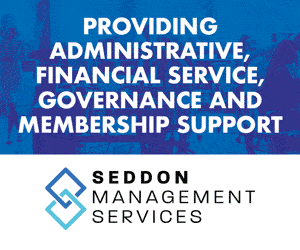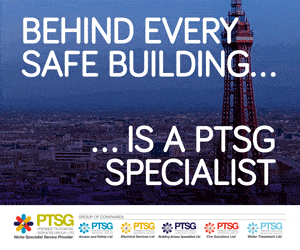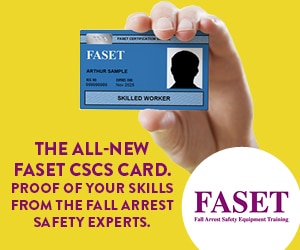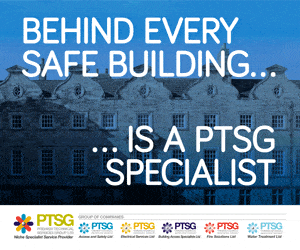By Oliver Hiner, Director of Operations, Portico
The workplace has undergone a seismic shift in the last five years. Hybrid models are now the norm, organisational hierarchies are flatter, and younger generations, particularly Gen Z, are entering professional life with different expectations and experiences. Many of them began their careers working remotely, often without the benefit of seeing traditional office behaviours modelled first-hand.
At the same time, facilities teams are being asked to support more than just physical infrastructure. They are now key players in shaping workplace culture, employee experience, and even brand perception. Yet one area that often goes unnoticed until it causes problems is etiquette. Those subtle behavioural norms—how people interact in shared spaces, engage in meetings, or use technology—have become more fragmented, and the effects are showing.
Why workplace behaviour matters
Take hybrid meetings as an example. When etiquette is clear, meetings run smoothly, with equal participation, minimal distractions, and a sense of shared purpose. When expectations are unclear, it quickly becomes apparent. Remote colleagues may feel excluded, in-person attendees may dominate, and the meeting becomes less productive for everyone.
The same applies to everyday interactions. A lack of clarity about how to use shared kitchens, book meeting rooms, or take video calls in open areas can create friction. These issues are rarely about the physical space itself. They stem from unclear expectations about how that space should be used.
As facilities professionals, we often see these pain points emerge first. When people behave in ways that frustrate or confuse others, it creates operational noise: repeated complaints, inefficient use of resources, or a sense that the workplace is not working as it should. These may not always reach the level of formal escalation, but they affect how people feel about the environment they work in.
Spotting the signs of behavioural drift
It is easy to dismiss poor etiquette as isolated or informal, but the effects are cumulative. Signs of behavioural drift might include a rise in no-shows for booked rooms, informal complaints about noise or mess, or disengagement during hybrid meetings. Over time, these small moments start to erode trust, focus, and collaboration.
The challenge is that these behaviours often sit outside formal policies. There is no handbook for how loudly to talk on a Teams call or how long is acceptable to occupy a focus booth. Yet when expectations are unclear, frustration grows; especially in high-density, high-expectation environments.
Left unaddressed, behavioural drift can begin to undermine the very culture a business is trying to build. That has consequences not only for performance, but for wellbeing and retention.
How FM can support behavioural clarity
While it may not traditionally fall under the facilities remit, workplace etiquette is now central to performance. Facilities managers have an opportunity to guide and support behavioural norms in ways that are subtle but effective.
Here are five practical ways to do that:
1. Let space speak for itself. The design and layout of a space can strongly influence behaviour. Quiet zones, collaborative areas, and informal spaces should be clearly differentiated, using cues like furniture layout, lighting, and signage. When people understand the purpose of a space at a glance, they are more likely to use it appropriately.
This goes beyond design. Even small tweaks, such as adding acoustically treated phone booths, providing laptop-free zones, or colour-coding work areas, can prompt better use of space and reduce tension.
2. Collaborate across departments. Behavioural guidance is more effective when it is reinforced across multiple touchpoints. Working with HR, internal communications, or office managers can help integrate etiquette into onboarding, team meetings, or even visual messaging around the workplace. The aim is not to create rules, but to offer helpful reminders about shared expectations.
This is especially useful for new joiners, many of whom are navigating the office environment for the first time. Having a few clear reference points about workplace conduct, including what’s encouraged, what’s discouraged, can help remove anxiety and promote confidence.
3. Champion inclusive hybrid practices. Hybrid working is here to stay, but it is easy for imbalances to creep in. Facilities and tech teams can help create consistency by ensuring meeting rooms are set up to support both in-person and remote participation. Teams should be encouraged to rotate facilitators, check in with remote colleagues, and make shared documents visible to everyone.
It is also helpful to reinforce habits like being punctual, muting when not speaking, and using chat functions constructively. These might seem basic, but when they are overlooked, the dynamic quickly breaks down.
4. Empower front-line teams. Reception staff, floor hosts, and guest service professionals are often the first to notice changes in tone or behaviour. With appropriate training, they can respond in ways that maintain professionalism and help reinforce cultural expectations. These team members are not enforcing rules, but they are well-placed to set the tone and redirect behaviour calmly and constructively.
They also offer valuable insight into how workplace culture is functioning day to day. Their observations can help flag recurring issues that may otherwise go unreported.
5. Pay attention to informal feedback. Not all behavioural issues show up in formal metrics. Listening to what employees say (or do not say) can reveal valuable insights. If people stop using certain spaces, express reluctance to attend meetings, or regularly raise concerns, there may be a deeper issue linked to etiquette or expectations.
Anonymous surveys, informal check-ins, or even suggestion boxes can surface themes that help refine behavioural guidance or adjust space usage.
Creating a shared experience
Workplace etiquette should not be seen as old-fashioned or restrictive. At its best, it creates clarity, encourages inclusion, and allows everyone to focus on their work without unnecessary friction. When people understand what is expected, they are more likely to feel confident, respected, and able to contribute fully.
This is especially important in a multi-generational workforce. What feels natural to one group may be unfamiliar to another. Clear, respectful behavioural norms help bridge these differences without forcing anyone to conform to outdated ideas.
Etiquette also supports equity. When the rules are clear and consistently applied, everyone has the same opportunity to thrive; whether they are in the office five days a week or just one.
Final thoughts
The workplace has changed, but the need for shared understanding has not. In fact, in a more flexible and dispersed working world, clarity around behaviour is more important than ever.
Facilities teams are in a strong position to influence this. By focusing on how people use space, interact with each other, and engage with their environment, we can help workplaces feel not just functional, but human.
Etiquette is not about being perfect. It is about making space, literally and culturally, for people to do their best work together.







































